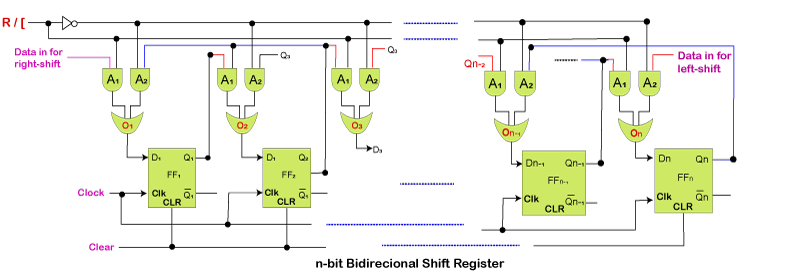Digital electronics Experiment 8 aim to study and verify the operation of bidirectional shift register
Note remember page numbers
Bidirectional Shift Register
Flip flops can be used to store a single bit of binary data (1or 0). However, to store multiple bits of data, we need multiple flip flops. N flip flops are to be connected to store n bits of data.
A Register is a device that is used to store such information. It is a group of flip flops connected in series used to store multiple bits of data.
The information stored within these registers can be transferred using shift registers.
A shift register is a cascade of flip-flops where one flop's output pin q is connected to the next data input pin (d). Because all flops work on the same clock, the bit array stored in the shift register will shift by one position.
For example, if a 5-bit right shift register has an initial value of 10110 and the input to the shift register is tied to 0, then the next pattern will be 01011 and the next 00101.

Bidirectional shift registers are the storage devices capable of shifting the data either right or left, depending on the mode selected.
The following image shows an n-bit bidirectional shift register with serial data loading and retrieval capacity. Initially, all the flip flops in the register are reset by driving their clear pins high.

R/L control line is made either low or high to opt for either left-shift or right-shift of the data bits, respectively.





Comments
Post a Comment